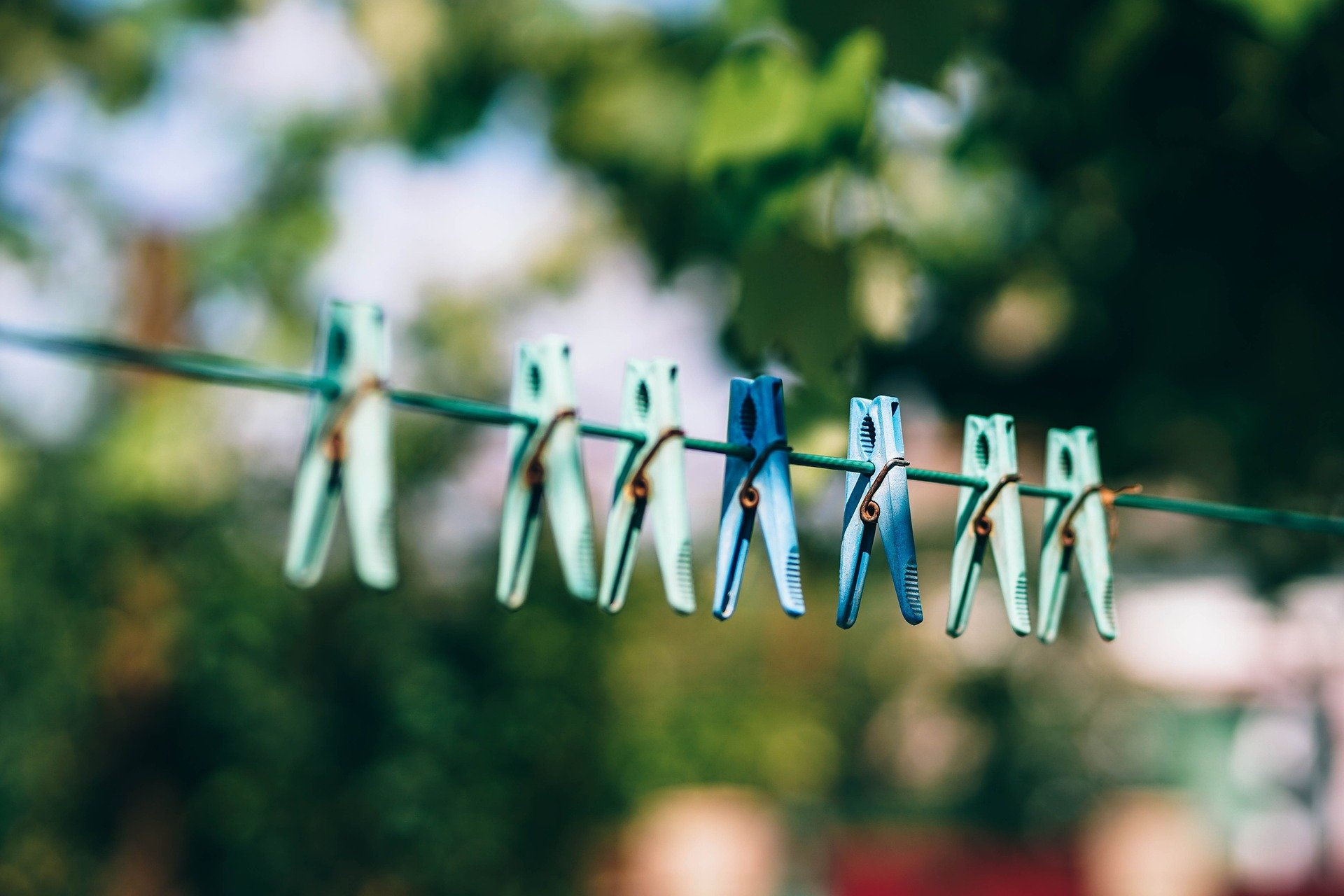We’ve all made laundry mistakes at one point in our lives, often unintentionally sacrificing our favourite clothes. Whether it’s a red sock with the white towels, or your favourite jumper in a wash that is too hot leaving it ten times smaller, we’ve all fallen victim to not reading the care label and ensuring that we are cleaning our clothes correctly.
But for those instances when we do take the time to find out the best practice for keeping our clothes clean, you may be left confused by the Aztec-style symbols ingrained on the silk tag. Squares, circles, waves, and dots seem like an indecipherable hieroglyph rather than a handy set of instructions to keep your best garments in good nick.
But in fact, once you understand the signs and symbols, it’s easy to keep your clothes lasting longer than you think and will make them easier to care for. Here we look for the tell-tale tag symbols, what they mean, and how you should wash your clothes.
Triangles
Triangles represent bleaching instructions for your clothes. There are usually three triangle symbols to look out for.
- A blank triangle means you can use a dilute solution of bleach to clean your clothes.
- A triangle with two stripes means you can only use a colour safe and non-chlorine type of bleach.
- A triangle with a cross through it means that you should not use bleach on this particular garment.
Circles
A lot of fabrics are better suited for dry cleaning. Following care label instructions for clothes that need dry cleaning is essential to ensure their longevity. However, most intricate details are for the dry cleaner themselves – just know that if there’s a circle, you should get it dry cleaned.
- A circle means that this item can be dry cleaned.
- Letters in the circle represent the chemicals and methods for dry cleaners to use.
- One line on the bottom means it requires a gentle clean.
- Two lines on the bottom means it requires a very gentle clean.
- Of course, a cross through the circle means you should not dry clean the item
Squares
This can often be a difficult step to get wrong, especially when we are used to quickly unfurling clothes from the washing machine to the tumble dryer. The square represents drying.
- A square with a swooping line means the clothing can be dried outside on a washing line.
- You should allow wet clothes to drip on a rack indoors if the square has three vertical lines in it.
- One short horizontal line within the square means that you should lay the garment flat to keep its shape.
A tumble dryer is represented by a square and circle:
- A plain circle and square means that it can be tumble dried.
- The symbol with a cross through it means that it should not be tumble dried.
- The symbol with dots within represents a heat recommendation. One dot means low heat and two dots means medium heat. Simple enough.

Some tumble dryers give you further detail, expressing which materials are suitable for each drying cycle. This can vary between cold and hot drying, how you intend to iron the garments, and whether they are made from cotton or wool. Check your tumble dryer’s manual for more help.
Bucket
Buckets signify how your clothes should be washed. Lines represent the harshness of the wash and numbers will represent the recommended temperature that the clothes should be cleaned at. 3
- A plain bucket and water symbol mean that clothes can be washed and spun on normal settings.
- If the bucket has a hand in it, then you should consider hand washing the item. Alternatively, some washing machines will feature this handy symbol, meaning they can be washed in the machine. This is mostly for woollen goods. Machine washing your hand wash items in a good washing machine with the right programmes will also help your delicate items to last longer as you won’t be wringing them out.
- If there’s a cross through the bucket, it cannot be washed. It may likely need to be dry cleaned — but check the other symbols on the label.
Quite simply, if the bucket has a number inside, it indicates which temperature that the clothes should be washed out. ‘30’ means 30 degrees. Not too difficult.

Your washing machine will have a range of settings, and you should match up these symbols to their settings. For example, selecting ‘Delicates’ on your dial will often give you cooler temperatures. Selecting ‘Dark garments/Denim’ will give you medium temperatures. However, most machines will allow you to create custom wash cycles.
Iron
Ironing is one of the more arduous steps in the washing process, but it’s essential to get it right to prevent your clothes from burning. The ironing symbol is often paired with dots, representing which materials and heats should be used.
- A plain iron symbol means you can iron the garment at any temperature.
- An iron with one dot means that a low heat should be used as the garment is delicate, with materials like wool or silk.
- An iron with two dots means that you should set your iron to a synthetic setting.
- An iron with three dots represents a setting for linen and cotton.
- A plain iron with a cross through it means you should not iron it.
- An iron with a steam cloud below it and a cross means that it should be ironed on a dry setting.
Knots
If you see what look like a knot on your care label, this symbol indicates if you can wring your clothing or not.
- A plain knot means you can wring your clothes.
- A knot with a cross through it means that you should not wring your clothes, as you may damage it.

Maintaining the longevity of your clothes has never been so important. While saving you money, good cleaning can also help to save the planet by preventing damaged clothes from being thrown away. While the symbols may appear complicated on first sight, this guide should have cleared up any confusion. Now, you’re able to wash with confidence and wear your clean clothes with pride.
Image Sources
https://www.which.co.uk/reviews/washing-machines/article/washing-symbols-explained-aXkjx1J2v8nK










